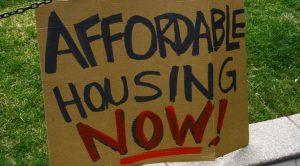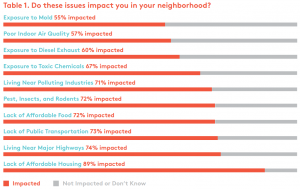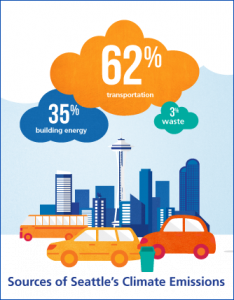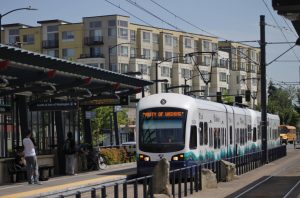Housing and Climate Justice
Leilani Batac

While it is important to notice that climate change is directly associated with many issues we are faced with today—such as health impacts, reduced agricultural yields, and declining water supply (USGCRP)—it is also essential to understand that climate change is indirectly related to other threats as well. When talking about climate change in Seattle, there are numerous contributing factors. In this section, we will be highlighting those factors while focusing on linking affordable housing and climate change. Establishing the basis of this topic, affordable housing is associated with climate justice, both emphasizing the need to keep communities stable and together along with being a lead solution to a reduction of greenhouse gas emissions produced by the transportation within and out of the city.

In 2016, Got Green and Puget Sound Sage conducted a study titled “Our People, Our Planet, Our Power.” which focused on the South of Seattle. Within their studies on climate change, they conveyed the community’s opinions, feelings, and beliefs and found that the main concern the community articulated was the availability of affordable housing. The groups linked this to climate resilience by explaining that displacement leads to “not just displacement of households, but erosion of cultural anchors like community centers, culturally relevant businesses, faith institutions, and service providers. When communities lose these anchors or have to leave them behind as they disperse to the suburbs, we lose critical social cohesion to deal with all threats, including climate change.” They had found that their community and their social location was the center of their well-being and a haven from climate change.
Considering the lack of affordable housing and being stripped away from their haven from climate change, it is important to recognize who makes up the communities who are faced with these detrimental states—people of color, those who have been marginalized, and low-income people. Research shows that frontline low-income and communities of color are first and worst hit by climate change and its impacts. In Washington, 46 percent of all toxic sites are in areas mostly populated by people of color, while 56 percent are in largely low-income areas. These communities experience the harms of pollution and climate change, including extreme weather events, contaminated drinking water and waterways, poor air quality, and unhealthy housing (Seattle Foundation 2020). Read more about the Disproportionate Impacts of Climate Change. With that, housing and its placement are clearly connected to our health, but it’s not so obvious that housing placement can be indirectly related to climate change in these communities.

As a result of lacking affordable housing stated previously, there comes an additional consequence paired with it. The issue with affordable housing is directly related to accessibility to transportation, which then makes it indirectly associated with climate change. Road transportation is the leading cause of greenhouse gas emissions here in Seattle. In 2016, nearly two-thirds of Seattle’s climate pollution came from road transportation, 53% due to passenger transportation, and 9% from freight transportation (City of Seattle). Which the city’s set goal of reducing emissions from passenger vehicle transportation to 82% of 2008 levels by 2030 stems from. One action to reduce emissions is to implement transportation solutions, for example, transit-oriented development (TOD), one of the older innovative transportation solutions, is very likely to reduce emissions and help build resilience (U.S. Global Change Research Program). However, as it has been stated in “Our People, Our Planet, Our Power,” these reductions are only possible with effective land use and transportation design, coupled with affordable housing.

Prioritizing adaptation actions—for example, increasing the amount of affordable housing and accessibility to clean transportation—for the most vulnerable populations would contribute to a more equitable and healthier future within and across communities. In this prioritizing process in Seattle, it is essential that affordable housing becomes granted to those who lack it. However, it is more important to place these affordable housings in neighborhoods that are close in proximity to transit. It has been documented that higher-income households drive more and own more vehicles when compared to low-income households, which makes it critical that low-income families can afford housing in areas that provide them access to transit. On top of that, low-income households near transit drive 50% less than low-income households in non-TOD communities, which decreases greenhouse gas emissions (TransForm).
With all this in mind, affordable housing is essential when it comes to fighting for climate justice, especially for the low-income communities and the communities of color. The lack of affordable housing strips apart communities, which leads to a lack of clean public transportation, which is a major contributor to climate change here in Seattle. In the following subsections, the relation between affordable housing and climate justice will be expanded through:
Media Attributions
- Featured image is attributed to fumigene under a Creative Commons 2.0 license.
- Transit-oriented development near the Othello Station in Southeast Seattle. Photo by SounderBruce/Wikipedia Commons

